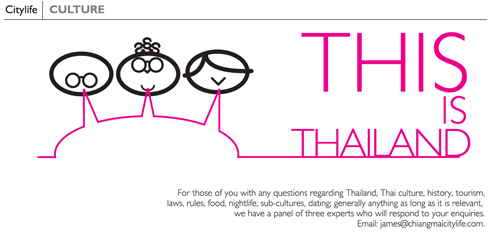
1. I do a lot of travelling to and from Thailand for business and pleasure, have you got any tips for jet jag?
Grace:
I would advise people not to worry too much, the main thing is that your body will eventually re-adjust itself to the time zone of your new location, even if it takes a week or more. Don’t get too worked up about losing sleep it won’t kill you, being anxious about the problem will not help. Also make sure you allow at least 3 days after arriving before you start work or doing anything too taxing. Other tips for reducing jet lag include; staying in good physical condition, before your journey take exercise, eat and sleep well, make sure you are in good health to travel and for its affects. Adjust your schedule slightly before you travel. Set your watch to the time of your destination whilst on the plane. Avoid alcohol, unfortunately alcohol can cause dehydration, disrupt sleeping, trigger nausea and general discomfort. Cut down on caffeine, which can cause dehydration, disrupt sleeping, jangle your nerves and intensify any travel anxiety. Try to get as much sleep on the plane as is possible. Try to avoid sleeping pills if you can, they can make you groggy. However, if you must for the first two or three nights, it’s OK to take a mild sedative, visit your doctor before your trip for a consultation. But wean yourself off the sedative as soon as possible or it could become habit-forming. I know people who use anti-histamines such as Anax which have a drowsy affect, for short periods of sleeplessness. When you arrive try to adapt to the local time zone as soon as you land, try and be outside in the sun for some of the day, eat at local meal times, ensure you go to bed and wake up at the time of your new destination. Doing exercise or getting some sea air can help tire you out for a good night’s sleep. Children can be affected by jet lag more than adults, as they often can’t resist the urge to sleep when they are tired. Try to keep children occupied when they want to sleep during the day. Some people recommend taking melatonin, homeopathic remedies, eating cherries or a diet high in carbohydrates. Zzz
2. Every time I go to the night bazaar or the walking street, I see hill tribe women selling ethnic jewellery, key chains and bags. Are they all from the same tribe? If not, how can I tell the difference between them?
Denise, Intern:
Most of the women that you see in traditional hill tribe dress at the Night Bazaar and the Sunday walking street are Akha. You can tell by their ornate headdresses, and the silverware that adorns them. Many Akha headdresses also have beaded cords that drape below the chin. You can also distinguish them by their clothing, which is black with colourful strips of embroidery on the sleeves. The Akha are well known for their silver and woven jewellery, which they peddle at the night bazaar. Other hill tribes in the Chiang Mai area are the Karen, the Hmong, the Lisu, the Mien/Yao, and the Lahu. If you want to look up more information about these different hill tribes, check out: www.wayfarersthailand.com/hilltribes.htm.
3. I’ve seen people wearing surgical masks and some with contraptions similar to WWII gas masks on to ‘protect’ themselves from the pollution, but does wearing a dust mask really make a difference?
Kwan, Intern:
I have researched this though I’m not sure how reliable the information I have found is, but here goes. Wearing a dust mask can be useful if you use the right one. There are many types of masks, the one that is widely used is called a gauze mask which is said to be dustproof, though one-strap paper masks and surgical masks are said to provide little if any protection. Normal dust particles have a maximum size of 100 microns, but the dust particles from the pollution in Chiang Mai right now are much smaller, around 2.5-10 microns. The most appropriate mask for the pollution we are experiencing is a N95 mask which can filter 0.3 micron sized particles and looks like a workman’s mask. Unfortunately this mask seems harder to find and more expensive. It’s best to ask in a drug store for this type of mask and check the information on the packet. There are also some higher quality masks available online. We found this a useful online document: http://www.arb.ca.gov/smp/progdev/pubeduc/wfgv8.pdf.
